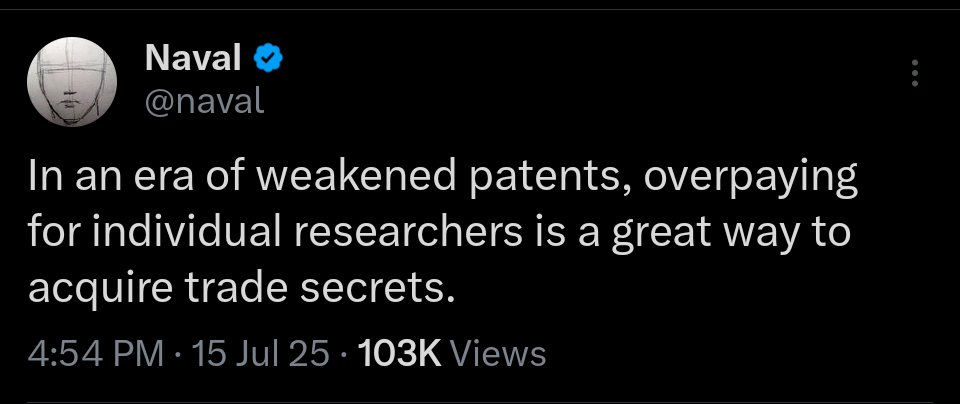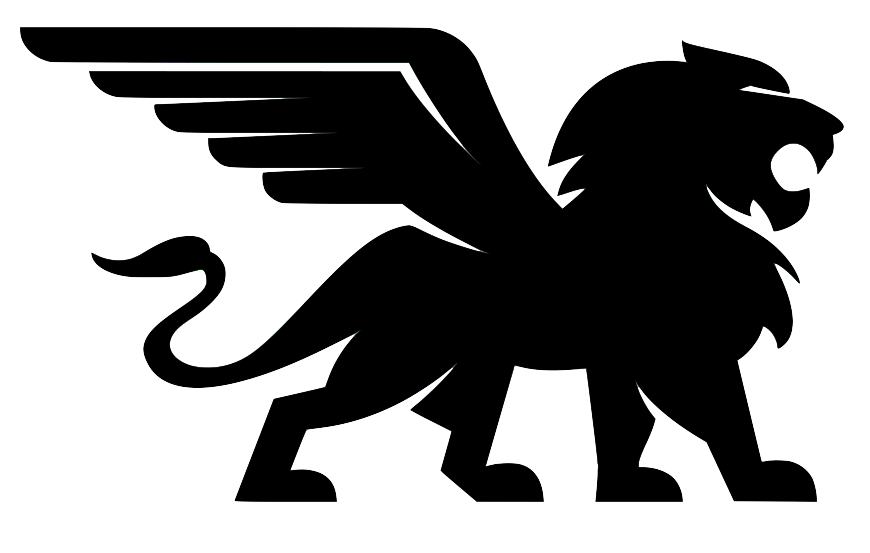Patents, Trust, and the Health of the Startup Ecosystem

From the wrangling over the definition of AGI between Microsoft and OpenAI (thanks to the terms of an exclusive IP license) to the recent acqui-hires of the founders of Character.AI, Windsurf, Scale AI, and more (absent many of their colleagues) there has never been a better teaching moment for recognizing the role of patents as affirmative asset partitions. These high-profile tech industry moves demonstrate how intellectual property creates distinct pools of assets that can be separated, transferred, and protected independently from their creators and the organizations that house them.
What is an affirmative asset partition? In their foundational work The Essential Role of Organizational Law, Henry Hansmann and Reinier Kraakman identify affirmative asset partitions the crucial foundation of organizational law — even more important than limited liability. While limited liability protects owners' personal assets from business creditors, affirmative asset partitions work in reverse: An affirmative asset partition shields business assets from the personal creditors of owners or managers. This creates a protected pool of assets dedicated to the business enterprise, reducing monitoring costs for creditors, simplifying bankruptcy proceedings, and enabling more efficient capital allocation. The mechanism transforms a collection of assets into a distinct legal entity with its own economic identity.
Building on this framework, Paul Heald demonstrated in A Transaction Cost Theory of Patent Law that patents function as a special form of affirmative asset partition in the realm of intangible assets. Patents create legally protected boundaries around information assets, separating them from the general knowledge and capabilities of inventors, employees, and firms. This partitioning serves multiple economic functions: it protects team production problems by clarifying ownership of collaborative innovations, reduces transaction costs in technology transfer by creating discrete transferable units, and enables specialized financing arrangements around specific technologies. Just as organizational law allows a business to hold assets distinct from its owners, patent law allows ideas to exist as discrete assets separate from their creators' minds and general know-how — and for inventors to credibly commit their ideas to their employer wholly independent of themselves.
The concept of affirmative asset partitions explains how strong patents can obviate the need for the types of deals that we're seeing now, deals that have been structured to avoid antitrust challenges, but which threaten the very foundations of the entire startup ecosystem. When startups patent their core technologies, an exclusive right is created for the startup that owns them, an exclusive right that remains with the startup regardless of where the inventors go. Strong patents give inventors as a group a way to make a credible commitment to each other to stick together or lose access to the pool of intellectual property they've co-created. Strong patents in the tech industry thus function similarly to strong copyrights in the open source community by providing a substrate for impersonal trust to grow. Had they held strong exclusive rights to the products sold, it is at least more dubious that either the Windsurf or Scale AI deals could have been done in the same way.
Likewise, by agreeing to give Microsoft an exclusive license to its intellectual property until "Artificial General Intelligence" (AGI) has been achieved, OpenAI created an affirmative asset partition, which allowed OpenAI to raise the billions of dollars (in cash flow or credits) needed to train its earliest models. The way that exclusive license seems inconvenient for OpenAI now given OpenAI's intention to convert into a for-profit only underscores the importance that exclusive rights had in providing a substrate for credible commitment between Microsoft and OpenAI.
This partitioning reduces transaction costs in innovation markets by creating clear boundaries around technologies, standardizing valuation metrics, and enabling complex multi-party arrangements that would be impossible if innovations remained inseparable from their human creators. On a more human level, it means the inventors are throwing their lots in together, at least with respect to the subject matter of what they co-create at a given startup. Without strong patent rights, all we've got is trade secrets to enforce that pact, and as we're seeing now, trade secrets aren't quite strong enough when there are billions at stake.
Understanding patents as affirmative asset partitions reveals why intellectual property law evolved to solve coordination problems beyond mere incentive provision. The traditional narrative focuses on patents as rewards for innovation, but the asset partitioning perspective highlights their role in creating functional markets for ideas. Just as the corporate form revolutionized business by creating stable entities that could outlive their founders and attract diverse investors, patents helped create a stable startup ecosystem, whereby new ideas can be developed, transferred, and commercialized across organizational boundaries through licensing. Patent policy should consider not just innovation incentives but also the transaction cost implications of different partitioning arrangements — a perspective increasingly vital as collaborative innovation and complex licensing arrangements define the modern technology landscape.
Because while it may be nice to cherry pick an inventor here and there for their trade secrets, by degrading trust we're threatening the entire startup ecosystem. Oh, and believe me as somebody who's litigated both: While patent infringement lawsuits are expensive and complex, trade secret misappropriation lawsuits are even more complex, more expensive, and have a tendency to ruin careers if not lives.
